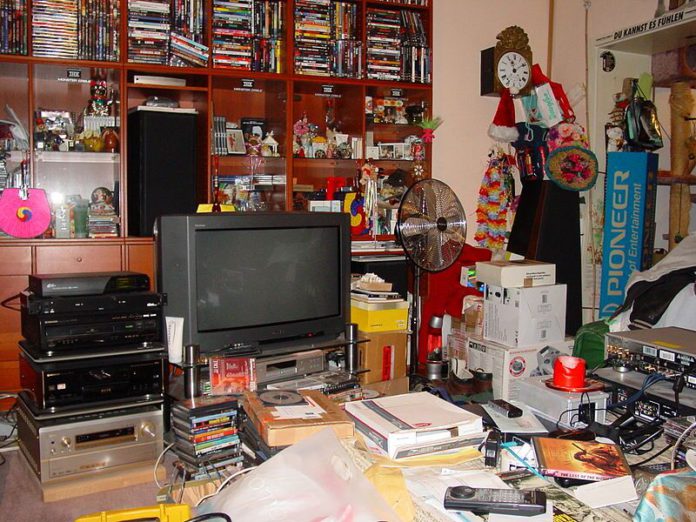
CONTROLLING clutter in your home can be a challenge; many believe their houses are cluttered with things they don’t use anymore, and multiple studies have found a cluttered home can negatively affect your mental and physical health, while a cleaner home can make you feel happier and healthier.
You may realise clutter isn’t good for you, but it’s not always easy to get organised.
To help you get started, here is a room-by-room guide to cutting the clutter:
Inside the front / back door
Decide what belongs in your hallway and what doesn’t. The size of the space will influence this decision.
If your hall or porch is a spacious area, you might choose to store shoes, boots, umbrellas and your shopping trolley there. If you have a smaller space, you may decide you only have room for car keys.
Think about removing anything from the space that doesn’t help it serve its purpose in your home.
Wall-hung key racks can keep important keys at your fingertips.
Shoe racks are available in a variety of sizes and styles to fit your space and decor while keeping footwear organised and off the floor.
Family room
Assess the kind of clutter that builds up in your family room.
Perhaps your clutter consists of children’s toys, magazines and newspapers, or multiple remote controls for your variety of electrical entertainment.
Once you know what kind of clutter you’re collecting, decide if it belongs and must be accommodated, or should go.
Add storage solutions specific to your needs. For example, storage ottomans can double as extra seating and a place to store frequently used toys.
Sometimes furniture that’s too large for a space can add to the feeling of a cluttered and congested room.
Assess your family room furniture. Is it the right size for the space, or is it overwhelming the area?
Replace overly large furnishings with ones that better fit the room. If you have the room for it, a large shelving or cabinet unit can help contain clutter.
Add decorative containers to help keep everyday items like toys, magazines and other frequently used items organised on shelves.
Bathroom
Tackle the bathroom cabinets and dump any partial bottles of shampoo, tubes of toothpaste and towels that have seen better days.
Be brutal. If you haven’t used that half bottle of body wash so far, chances are you never will.
Clean out your medicine cabinet. Discarding expired prescription medicines can help reduce the risk of someone accidentally taking the wrong medication.
Kitchen
Worktops frequently host a wealth of kitchen-related clutter, from the post you brought in yesterday and forgot to go through to small appliances you use once or twice a year.
Clearing off worktops can make a kitchen feel visually more appealing, look bigger and function better.
Remove and store rarely used small appliances, ditch the ceramic container of utensils and store those items in drawers instead.
Pantries and cabinets can be nearly as cluttered as work spaces. Adding shelving and storage units within cabinets can help keep pots, pans, lids and plates better organised and more easily accessible.
Some people need a bit of extra incentive to stay organised.
Consider replacing solid cabinet doors with glass ones that reveal what’s inside. Knowing the contents of your cabinets are always on display can help inspire you to keep them tidy and organized. Plus, glass-front cabinets are an opportunity to create an appealing visual display.








